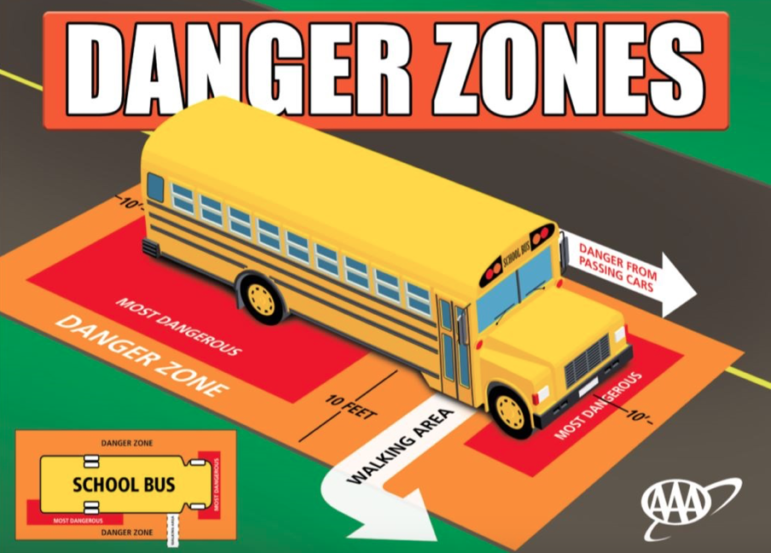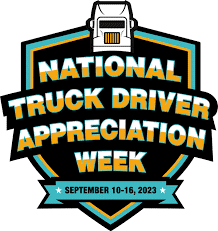In the next two weeks we will see many students returning to school after the summer break. For some of these students this will be the first time since the pandemic started that they will be returning to school in person. Pedestrian-vehicle injuries are a leading cause of death for children ages 5 to 14. That means your drivers need to step up their safety around school zones, crosswalks, bus stops and wherever children may be playing outside. Here are some back-to-school tips:
1. Be familiar with school zones. Get in the habit of noticing where school zones and crosswalks are on routes that you normally take. Accidents, including pedestrian accidents, are far more likely to occur locally on routes with which drivers are more familiar and comfortable.
2. Stop for school bus lights. Always stop for school buses with flashing red lights. Drivers approaching the bus must come to a full stop for the duration that the red lights are on. Some school buses have flashing yellow lights also, which means that drivers may proceed with extreme caution. Bus drivers often engage the flashing yellow lights before the flashing red lights, signaling that they are about to stop.
3. Obey crossing guards. School crossing guards are given police training and the same authority as local traffic police in most areas, so disobeying a crossing guard could get you in some serious trouble. Remember that driving on major streets where crossing guards and crosswalks are observed is safer than taking "short-cut" side streets where children may be unattended.
4. Anticipate the worst. The speed and distance away of oncoming cars is more difficult for young children to judge. Always anticipate the chance that a small child may run in front of you by slowing down and preparing to brake.
5. Be careful around parked vehicles. Be especially careful in areas with parked vehicles on the side of the road. Children waiting to cross may be especially difficult to see behind parked sport-utility vehicles.
6. Turn your headlights on. Drive with headlights on in areas with children and pedestrians. The AAA says that the use of headlights can reduce pedestrian accidents by about 25 percent.
7. Avoid using cell phones when driving. Cell phones are a known distraction. Never use hand-held cell phones while driving, and never use hands-free cell phones while driving in school zones or areas with children. The same goes for activities that distract the driver, such as changing CDs, looking at notes and reading maps.
8. Avoid reversing. Try to avoid reversing your vehicle in areas with children. It's more difficult to see short children and attend to your car's blind spots while reversing.
9. Don't speed. Remember that the speed limit in most school zones during school times or when children are present is 25 miles per hour. Bad weather, or areas with limited visibility, will require a lower speed. Your visibility to pedestrians, your ability to see them and your stopping distance all may be greatly impaired by weather or road conditions so follow common sense and slow down.
10. Don't honk at pedestrians or bicyclists. Honking at a child, whether on foot or on a bicycle, is generally not a good idea. The noise could possibly cause the startled child to trip or fall and be in a dangerous position for other approaching traffic.
School Buses and Laws
Even if you don't have kids in school, it's not hard to see the increase in school buses around this time. Laws vary by state, but usually you have to stop if a school bus is loading or unloading—no matter what side of the street it's on. The only time a vehicle is not required to stop for a school bus is when both vehicles are on a four lane roadway and the bus is stopped in the opposite direction from which a driver is traveling.
Any other time, a driver must stop before meeting or overtaking (passing) a school bus that is stopped and loading or unloading passengers.
This includes:
- Any two-lane roadway, in rural areas and within city limits.
- Any roadway, highway, private road, or parking lot located on school property.
A warning will be given by the school bus at least 100 feet (200 feet in rural areas) in advance of a stop. The bus driver will flash lights on the front and rear of the bus. The school bus stop signal arm will be extended after the school bus has come to a complete stop.
A driver approaching a school bus from the opposite direction must come to a complete stop and remain stopped until the stop signal arm is no longer extended, and the flashing lights are turned off or the school bus driver signals vehicles to pass.
Passing a school bus while its red lights are flashing is illegal in every state. A conviction for passing a stopped school bus with flashing lights and the stop arm extended will result in the suspension of an individual’s driver’s license. Watch for school buses stopping at railroad tracks. Make sure to familiarize yourself with the local laws regarding school buses. In their guide, "Reducing Illegal Passing of School Buses," the National Highway Traffic Safety Administration (NHTSA) reports that many school buses are illegally passed about once a day. Some buses are even passed on the right (the side children use). https://www.nhtsa.gov/school-bus-safety/reducing-illegal-passing-school-buses
Driving Safely with School Buses
https://www.youtube.com/watch?v=lOgcm0K8_us
CFR 383.3 - Applicability
What is the largest bus you can drive without a CDL?
Any driver of a bus that is designed to transport 16 or more persons, or that has a GVWR of 26,001 pounds or more, is required to obtain a CDL in the applicable class with a passenger endorsement.
Do the regulations require that a person driving an empty school bus from the manufacturer to the local distributor obtain a CDL?
Guidance: Yes. Any driver of a bus that is designed to transport 16 or more persons, or that has a GVWR of 26,001 pounds or more, is required to obtain a CDL in the applicable class with a passenger endorsement. This includes drivers transporting empty school buses on a public highway.
Are drivers required to have both the “P” passenger and “S” school bus endorsement if they are not transporting students when operating a “school bus,” as defined in § 383.5?
Guidance: No. Only drivers actually transporting pre-primary, primary, or secondary school students from home to school, from school to home, or to and from school sponsored events in a school bus are required to have both the “P” and “S” endorsements. Only a “P” endorsement is required by drivers delivering school buses from the manufacturer, by mechanics and other drivers operating empty school buses, and by drivers transporting students and/or adults to and from events that are not sponsored by the school.
National Truck Driver Appreciation Week is September 10-16, 2023
Nearly every aspect of daily life is made possible because a truck driver delivered the goods and resources people need.
National Truck Driver Appreciation Week is an important time for America to pay respect and thank all the professional truck drivers for their hard work and commitment in undertaking one of our economy's most demanding and important jobs. These 3.5 million professional men and women not only deliver our goods safely, securely, and on time, they also keep our highways safe.
Americans and Canadians have taken extraordinary steps to show their appreciation for the important work that professional truck drivers have done. From children passing out lunches, to "I Heart Truck" signs across the highways, the public has taken notice of the essential role truck drivers play in their lives. As we reflect on the past three years, I often wonder where we would be today if the truck drivers had refused to drive the trucks at the onset of the Covid pandemic that were delivering our personal protective equipment (PPE), food, medical supplies and the list goes on and on!
This week in September is a small way to show appreciation to the 3.5 million professional men and women who not only deliver our goods safely, securely, and on time, but also keep our highways safe. Start planning now to do something special for your drivers during this week in September that we set aside to recognize them.










